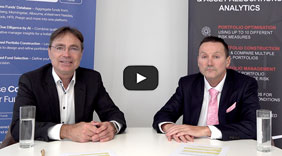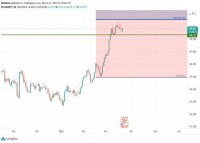|
 Dominik v. Eynern comes from a business family which is now in its 5th generation. He holds a BSc in Economics and a MSc in Finance, worked in the international investment banking industry. He's a founding member and director of Family Hippocampus ltd. His research on family dynamics is inspired by insights from behavioural economics, cognitive neuroscience, dynamic complex system, and chaos theory. How 'Belief Bubbles' Are Sabotaging Communication Between Generations- And What You Can Do About It Picture this: A boardroom where three generations of a successful family business sit together. The 75-year-old founder insists on loyalty above all else. His 50-year-old son pushes for performance metrics and KPIs. Meanwhile, the 28-year-old granddaughter won't stop talking about purpose and sustainability. Sound familiar? Welcome to the modern family business battlefield, where the real enemy isn't competition or market forces-it's what 'Family Dynamics Activist 'Dominik v Eynern calls "belief bubble clashes." The $3 Trillion Problem Nobody's Talking About With family businesses controlling an estimated $3 trillion in global wealth and three generations now commonly working side by side (thanks to increased longevity), these invisible barriers are creating unprecedented challenges. The issue? Each generation is literally living in a different reality. "It's not just a communication problem," explains Eynern, who comes from a fifth-generation business family himself. "Each generation has fundamentally different mental models of how the world works. They're not just disagreeing-they're speaking different languages." The Science Behind the Struggle Here's what's actually happening: Our core belief systems are essentially set by age seven and become our default operating system, especially under stress. These beliefs act as filters, determining what we perceive as important information versus meaningless noise. When Grandpa says "loyalty," he means unconditional obedience to leadership. When Dad says "loyalty," he means following established procedures. When the millennial grandchild says "loyalty," she means alignment with shared values and purpose. Same word, three completely different meanings. The result? What communication experts call "information entropy"-a fancy term for when everyone thinks they're communicating clearly, but nobody's actually understanding each other. The Five Generational Mindsets Driving Your Family Apart Eynern suggests five distinct "belief bubbles" that dominate different generations:
Core belief: Survival through obedience
Core belief: Success through structure
Core belief: Merit beats seniority
Core belief: Many truths can coexist
Core belief: Work must have meaning beyond KPIs Why This Matters More Than Ever The acceleration of cultural change means these belief bubbles are colliding faster than ever before. What used to take three generations to shift now happens in one. Add social media, global connectivity, and rapid technological change, and you have a perfect storm of generational misalignment. Consider this real-world scenario: A successful manufacturing family business needs to decide on a sustainability initiative. The founder sees it as expensive virtue signaling. His son wants to see the ROI calculations. The granddaughter views it as non-negotiable for the company's future relevance. They're not having a business discussion-they're having three different conversations in parallel universes. The Hidden Costs You're Already Paying This isn't just about hurt feelings at family dinners. Belief bubble clashes lead to:
Breaking Free: The Path Forward The solution isn't to eliminate these differences-it's to recognize and bridge them. Here's how forward-thinking family businesses are tackling the challenge:
Start by explicitly identifying which belief bubbles dominate each generation in your family. Have each generation describe what "success," "loyalty," and "leadership" mean to them. The differences will surprise you.
Develop a shared vocabulary. When discussing strategy, define terms explicitly. "Growth" might mean market expansion to one generation and sustainable development to another.
Instead of forcing one generation's model on everyone, create systems that honor different approaches. Maybe the board focuses on performance metrics while a separate innovation committee explores purpose-driven initiatives.
Pair younger family members with elders not to "mentor" in one direction, but to exchange perspectives. The 70-year-old's wisdom about relationships might be as valuable as the 25-year-old's insights on digital transformation.
Remember that under pressure, everyone retreats to their core belief bubble. Build in cooling-off periods during heated discussions and recognize when stress is driving people back to their default positions. The Competitive Advantage Hidden in Your Conflict Here's the counterintuitive truth: Family businesses that successfully navigate these belief bubble clashes don't just survive-they thrive. Why? Because they've learned to leverage multiple perspectives that single-generation companies never access. The conformist generation brings stability and process. The performance generation drives efficiency and measurement. The purpose generation attracts top talent and builds brand loyalty. When these forces align rather than clash, the result is a uniquely resilient and adaptive organization. The Bottom Line The generational divide in your family business isn't a bug-it's a feature. But only if you learn to work with it rather than against it. The families that will dominate the next decade won't be those where everyone thinks alike, but those who've mastered the art of translating between belief bubbles. As Eynern notes, "The question isn't whether these different worldviews exist in your family business- they do. The question is whether you'll let them tear you apart or teach you to build something stronger than any single generation could create alone." The choice, and the opportunity, is yours. Based on insights from Dominik v Eynern, founder of the Family Hippocampus initiative, fifth-generation member of a business family, originally published in The International Family Offices Journal. | ||||
|
Horizons: Family Office & Investor Magazine
Why Your Family Business Is Stuck: The Hidden Force Behind Generational Conflict |
|





 RSS
RSS








